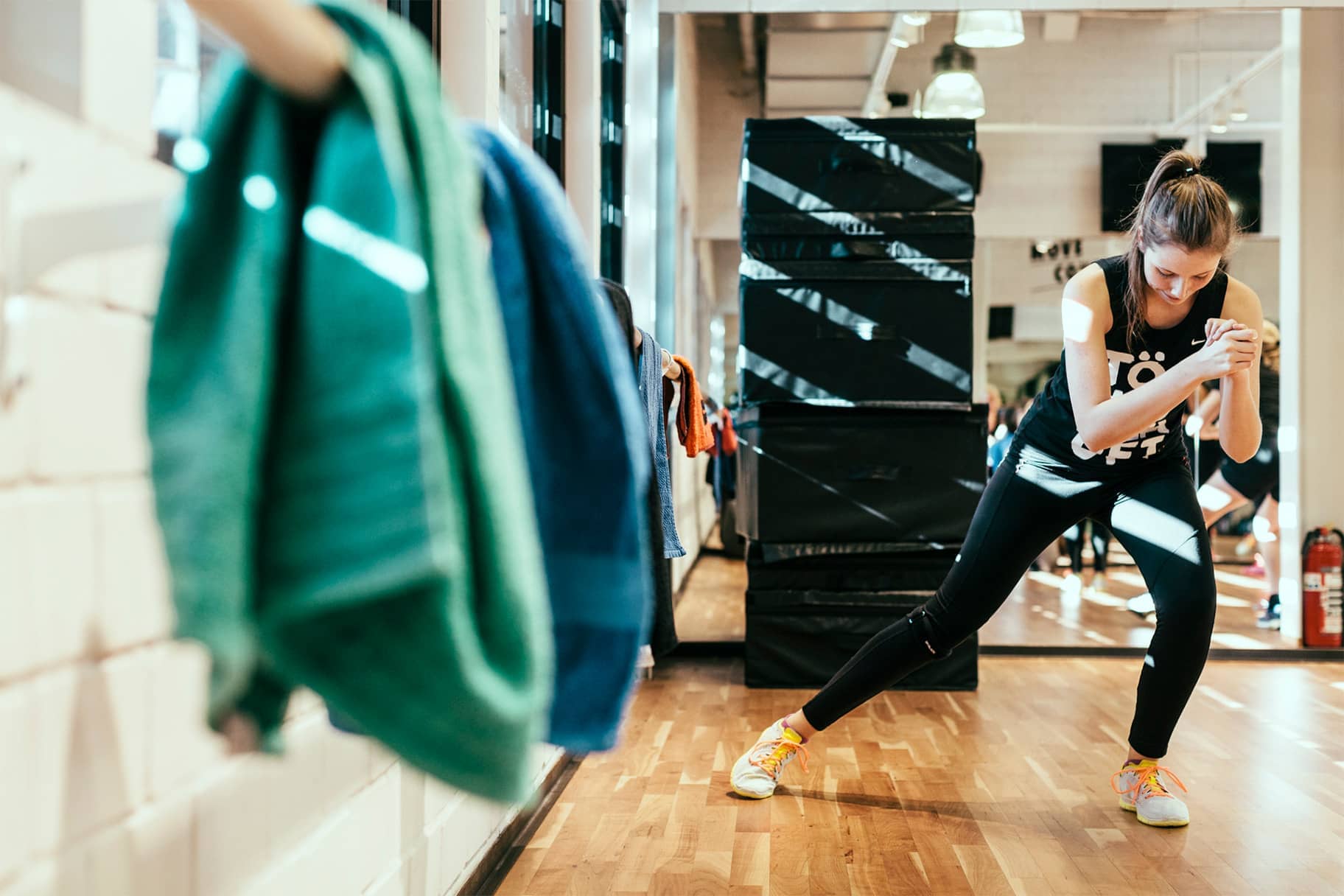So What's Runner's Knee, Anyway?
Sport & Activity
A dull aching around your knee may be a sign of the common injury.

Your marathon training has been going great. You've been logging all of the miles and even adding in some speedwork, but then you feel some discomfort in your knee. It's strange because sometimes you can push through it, while other times you end up stopping mid-workout because the ache intensifies.
It's possible that you might be experiencing the common injury, runner's knee. So, what is it, anyway? It's a casual term for an overuse injury called patellofemoral pain syndrome. It's one of the most common causes of knee pain, and it often affects women more than men due to anatomical, hormonal and neuromuscular differences.
Patellofemoral pain syndrome can occur in activities beyond running, such as hiking or those that involve jumping (think burpees or skipping). Figuring out the cause will help you determine the right treatment plan—with the help of your doctor or physiotherapist—to get you back out there and on your feet fairly quickly.
What is runner's knee and what does it feel like?
If you have runner's knee, the dull pain will pop up just above, around or below the kneecap, said Brendan Martin, P.T., D.P.T., a physiotherapist with Finish Line Physical Therapy in New York City.
"Often, pain will be in a few places surrounding the knee and may even migrate", Martin said, noting that the discomfort may hit at certain times (apart from running), such as:
- Walking
- Walking up the stairs
- Bending or straightening the knee
- A feeling of tightness in the morning
- Soreness and pain at night
Don't miss What Is Power Walking—and Do You Need to Add it to Your Weekly Workouts?
Causes of Runner's Knee
There's an underlying problem that's causing runner's knee, said Lee Welch, D.P.T., a board-certified orthopaedic specialist. He points out three main categories:
- Problems with running mechanics: this is the way that you run. "Certain movement patterns create too much pressure around the knee, rotation of the knees, excessive mobility of the hip or pronation from the foot", Welch said. These can all create knee pain. Sometimes, this can be a problem exacerbated by wearing the wrong running shoes.
- Anatomical (or structural) issue: for example, anatomical differences in women versus men may affect how the kneecap tracks, leading to discomfort. Likewise, being too quad-dominant (meaning your quads are disproportionately stronger than your hamstrings) can put more pressure underneath the knee, Welch said. Other imbalances of the hips and ankles can contribute, Martin said.
RELATED: The Reason Your Squats Aren't Growing Your Glutes—and How to Fix It
- Overuse: did you ramp up training quickly? Doing so puts stress on the knee, leading to pain over time.
"It's not always mileage related. We have runners who run 50 miles per week who have no issues because their body is used to it, but doing too much, too soon [might] mean your body is not used to that intensity, which can lead to issues", Welch said. Still, even in times of overuse, there's probably still a structural or mechanical problem at play, he said.
Diagnosing Runner's Knee
If you have the above symptoms for more than one or two weeks, you should see your doctor to diagnose the injury, Martin said. Your doctor will conduct a physical examination and take a thorough health history (when your knee started to hurt, when it hurts, what it feels like, how it limits your day-to-day functioning), according to the American Academy of Orthopaedic Surgeons.
Your provider may also touch your knee to pinpoint where the pain is located and examine the alignment, stability and flexibility of your lower body, according to the AAOS. The doctor may order imaging studies such as an X-ray to check for damage or an MRI if you're not improving with treatment.
And bear in mind that even if you have runner's knee, running isn't inherently bad for your knees. Welch references a 2017 study that concluded that recreational runners had less of a chance of developing knee and hip arthritis compared with non-runners and sedentary people. Though it's worth noting that higher mileage competitive runners may be at an increased risk.
"Recreational running is generally a safely recommended form of exercise", he said.
Runner's Knee Treatment
1.Take time off.
Even though it can be challenging to pause running when you're in the thick of training, taking a break from the miles is the key to proper runner's knee treatment.
"The longer one pushes through the pain, the longer the recovery period will be", Martin said. In many cases, you shouldn't be out for long—three to 14 days; though that can be as long as three to six weeks for more serious cases of runner's knee or depending on how long the pain was ignored, he said.
Resting isn't the only thing you should do. It's likely that there may be an underlying issue—whether that's structural or your running form—to address with the help of a doctor or licensed physiotherapist.
2.Make an appointment with a physiotherapist.
To return stronger and improve your running abilities when you're benched, see a physiotherapist for rehab, Martin said. "Proper physiotherapy will resolve runner's knee the vast majority of the time", he said.
During this time, your physiotherapist will analyse your running gait, look at your footwear and assess for anatomical issues and muscle imbalances, as well as recommend strength training, Welch said. They can tailor a get-back-out-there programme for your body's needs.
3.Improve your running cadence.
In addition, there's evidence that increasing running cadence or the number of steps you take per minute, can reduce the load on the patellofemoral joint, Welch said.
"This is a safe thing to try. If your cadence is 150 steps per minute, bump that up by seven to 10 steps", he said. While you can track this with a smart watch, you don't have to get hung up on the exact steps. "Just think of shorter, quicker steps", Welch said.
4.Pick up a strength-training routine.
Welch said that strength training is an essential part of recovery from runner's knee—and it generally prevents running-related injuries and improves performance. In general, this will involve glute and quad strengthening, such as via squats, deadlifts and step-ups. Research shows that strength training can significantly reduce sport-related injury. Make sure you incorporate at least two days per week into your training plan.
5.Include foam rolling in your rehab routine.
Lastly, consider adding in foam rolling. "It is not a substitute for proper flexibility, strength and progressive loading, but it can help to resolve the pain more quickly. It does this by decreasing the tension in the muscles around the knee that may be tugging on it and contributing to the pain", Martin said.
RELATED: The Top Benefits of Foam Rollers, According to Experts
To prevent runner's knee, consider increasing mileage and/or intensity by no more than 10 percent per week, Welch said. For example, if you are running 20 miles per week, you might run 22 the next week. However, if you want to add speedwork or hills, you may instead run the same 20 miles per week that second week with one run that incorporates a hill workout.
Words by Jessica Migala
